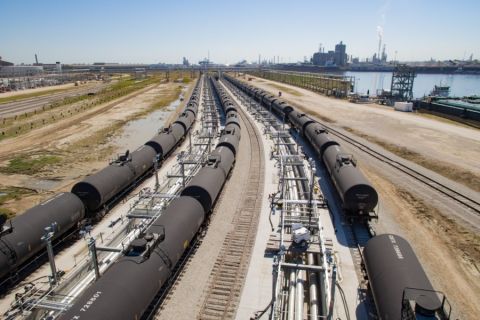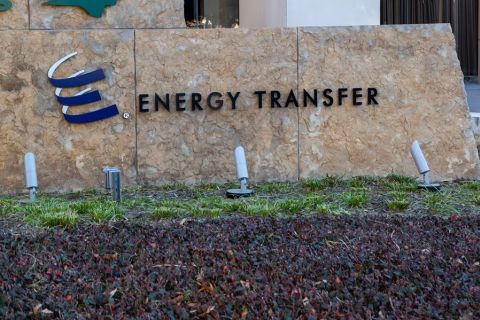Driving across South Texas at dusk, it does not take long to spot a bright red glow as one looks across the horizon. Flares dance above the oil fields as excess vapors are burned off during production. This oxidation process has been occurring since the start of the oil industry and until recently was regarded as the nature of the business. But due to ever-increasing federal and state environmental emission regulations for greenhouse gas, volatile organic compounds, and hazardous air pollutants, this may soon be a sign of the past.
Producers are looking to solutions such as oil storage tank vapor recovery units (VRUs), vapor recovery towers (VRTs), and low-pressure separator flash gas recovery (FGR) applications to eliminate gas flaring.

Today’s VRU applications are just as unconventional as the horizontal oil plays across the US. Steep oil production decline rates, inconsistent vapor production rates, and liquid fallout in the compression phase due to the Btu-rich vapor all contribute to the success and profitability of VRU applications. Each application needs to be evaluated carefully to determine which system of controls is best suited to meet the specialized requirements of VRU and FGR applications. In addition to the environmental advantages that these regulations provide, there is also an economic silver lining through incentives that can be recognized from recovered gas revenue, recovered NGL, and the carbon credit market.
The use of compression for vapor recovery has been well proven; however, having the correct controls and configurations to make it the most effective can be challenging. In the past there was little flexibility with varying vapor volumes, which can often occur due to rapid decline rates or early instability of production rates.
Compressco Partners has modified the controls of its 46-hp GasJack compressor design, which offers flexibility from a compression ratio standpoint in addition to the large suction/discharge operating parameters that can be achieved. Through its experience in unconventional oil plays, the company has developed systems that can achieve up to 98% control efficiency. Sharp vapor production declines and fluctuations can wreak havoc on VRU systems if the proper criteria are not met. The compressor applies makeup and recycled gas systems, speed, capacity control methods, and automatic start/stop to optimize the machine to the individual production at each location. Unlike other types of VRU compressors, the GasJack has the ability to handle wet gas streams (greater than 2.5 BBtu) with minimal efficiency losses due to contamination from liquid fallout.
For applications where an electric solution is preferred to capture vapors, there are several options with varying ranges in the company’s V-Jack line of compressors. All of the compressors can be used on the various types of VRU applications.
The industry has seen an increase in the vapor recovery market from 64% in areas such as the Niobrara/Bakken to more than 175% in the Eagle Ford during 2012. Flash separator applications in the Appalachian regions increased approximately 30% in 4Q 2012. Regulations requiring capture of vapors during flowback will also dramatically increase the need for VRUs on new drills.
Direct from storage tanks
The traditional method for recovering tank vapors is pulling the vapors directly off a common vent header across the top of all the oil storage tanks to capture losses. This method works very well with large-capacity storage tanks where the vapor production rate is fairly constant, such as central gathering facilities. However, an individual or small-cluster well pad presents challenges to compressor optimization due to standard daily operating procedures such as tank gauging and oil loading. Compressco assisted an operator in southeast Texas with its VRU application needs, providing recommendations for addressing oxygen ingress. A Fisher gas padding system was installed, thief-hatch spring weight and seal material were changed, and an Osensor was installed on the discharge side of the compressor. The makeup system is controlled with a pilot controller operating in inches of water column. The automatic start/stop compressor was configured to 50% volume capacity, and the speed was set at 75% of rated maximum allowable. The well produced 350 b/d to 400 b/d of 48API gravity oil, and the VRU sales meter averaged 70 Mcf/d in July 2011 and is still in operation. This setup reduced the risk of oxygen ingress and was economically viable. Most importantly, the operator was in compliance with regulations.
Vapor recovery towers
A VRT is a vessel designed as a final stage of gas separation between the heater treater, production unit, or low-pressure separator and the storage tanks and is operated near atmospheric pressure. VRTs provide a liquid barrier between the VRU compressor and the oil storage tanks, eliminating the potential for oxygen ingress from the storage tank battery. By reducing the pressure drop between the production equipment and the oil storage tanks, the VRT reduces the flashing losses that occur in the storage tanks to levels below state and federal emission requirements.
Several large operators in the Eagle Ford shale have chosen the VRT as the primary method for capturing vapor emission. With more than 100 GasJack compressors in this play, its success is due to a proven track record on handling high-Btu vapor, compressor operating flexibility, service capabilities, and equipment availability. Due to the steep production decline rates in the Eagle Ford, the company has had many locations where multiple units were set upon startup. As the production declined, the unit count was reduced by moving these units to new locations coming online.
Flash gas recovery
Flash gas in the oil field refers to the gas released by the pressure and temperature drops during the extraction and separation process at the well site. The flash process often occurs when pressures are below the pressure required for the gas to be discharged to the sales or gathering pipeline. This gas was often sent to a flare on location and destroyed. As fields mature, midstream companies lower the pipeline pressures to allow for the free flow of natural gas into the compressor stations or processing plants. The current revitalization of old fields is due to unconventional drilling technology and operators capitalizing on the opportunity to capture the previously flared gas using low-cost compression.
Recently, an operator in Ellis County, Okla., produced a well making an average of 300 b/d of oil and immediately noticed the increased flaring from the low-pressure separator. When the GasJack unit was delivered and installed at the location, the line pressure was 225 psig. The compressor was set up to pull the low-pressure separator to 7 psig and discharge to 225 psig. The first full day of FGR production totaled 153 Mcf/d, and the company held that average for several months for a return on investment of 6.5:1 at a gas price of US $3.
Recommended Reading
Canadian Railway Companies Brace for Strike
2024-04-25 - A service disruption caused by a strike in May could delay freight deliveries of petrochemicals.
Talos Energy Expands Leadership Team After $1.29B QuarterNorth Deal
2024-04-25 - Talos Energy President and CEO Tim Duncan said the company has expanded its leadership team as the company integrates its QuarterNorth Energy acquisition.
Energy Transfer Ups Quarterly Cash Distribution
2024-04-25 - Energy Transfer will increase its dividend by about 3%.
Guyana’s Stabroek Boosts Production as Chevron Watches, Waits
2024-04-25 - Chevron Corp.’s planned $53 billion acquisition of Hess Corp. could potentially close in 2025, but in the meantime, the California-based energy giant is in a “read only” mode as an Exxon Mobil-led consortium boosts Guyana production.
CNX, Appalachia Peers Defer Completions as NatGas Prices Languish
2024-04-25 - Henry Hub blues: CNX Resources and other Appalachia producers are slashing production and deferring well completions as natural gas spot prices hover near record lows.





